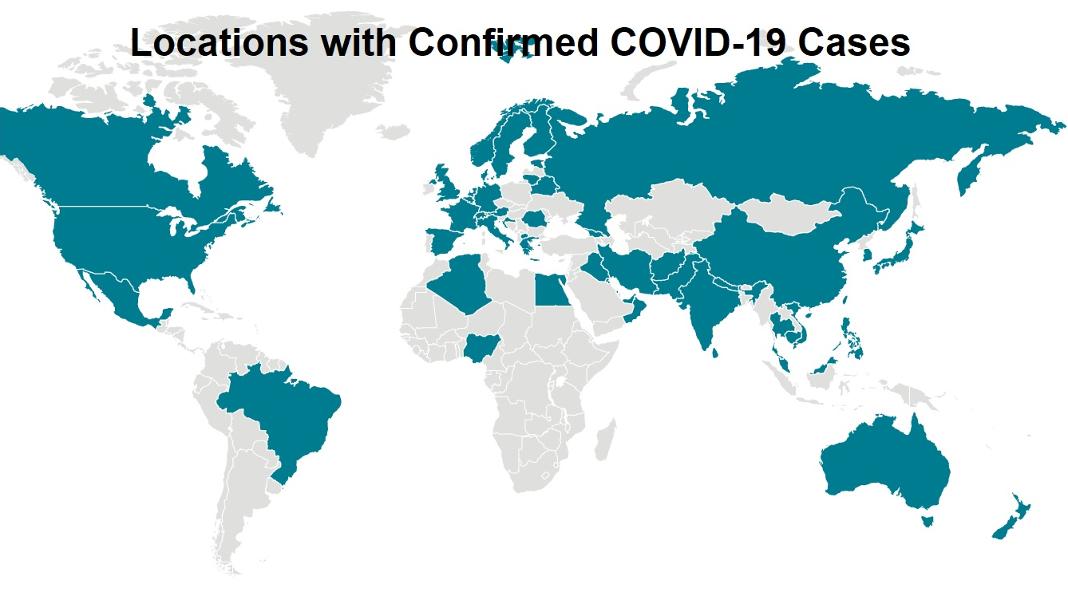
Bill Conerly
March 4, 2020
Business leaders are asking about the COVID-19 coronavirus’ impacts on the economy and what a company can do to help its employees. They should also be considering business planning for a disaster. There’s a good chance that not too much will happen to business plans, but also a small possibility of severe problems. This article provides a business checklist for COVID-19 preparedness after a brief medical summary.
Medical professionals have plenty of unanswered questions, but some statements are widely held within the profession:
- COVID-19 symptoms resemble common colds and flu, including coughing and fever. By the time a quarantine has been put into effect, some infected people have already left the quarantine area. So expect the disease to spread.

- A vaccine will take at least a year to develop, test and distribute—and that’s the best possible case.
- A treatment to mitigate harm may come soon, but there are no guarantees that one will be found.
- The disease seems to be most deadly to the elderly and those with co-morbidities (other medical problems).
The World Health Organization reported (update on 27 February 2020, updates to be published) the Hubei Province had 65,596 confirmed cases cumulatively, in a population of 59 million people, producing an incidence of just over one in 1000 people. So far 81% of the cases have been mild. The evidence so far denies reason to panic but justifies contingency planning.
Business challenges fall into two categories: direct effects and quarantine/restriction effects.
The most likely direct business problem is several workers fall ill around the same time. Because the disease spreads best when people are close, such as within 6 feet of one another, cases are likely to cluster among different workgroups. One team working in close quarters may have several people get sick, while others in the company remain healthy. Thus, companies could lose one or two functions while otherwise operating at full capacity. Workers in open office spaces take more sick days than people in enclosed offices, so the company’s work environment affects their risk.
The key business issue is what functions are lost when the illness takes hold. If the engineering department is late producing a new prototype, the company rolls on. If new order processing is struck, then the company could be severely damaged. And if a function such as tech support or production scheduling is hit, then slowdowns would spread across the business.
Companies may also face problems from quarantines, travel controls and limits on public assemblies. Public transportation may be closed or limited. These indirect effects are causing most of the economic damage in China.
Absenteeism among healthy workers may increase, as they stay home to care for sick relatives. They may also be unable to get to work if public transportation is shut down or they live in a quarantined area.
An existing disaster recovery plan may provide a good blueprint, though some do not address epidemics. Even then, however, they may list the critical areas to consider. Businesses without recovery plans might consider these practices:
Tell sick employees to stay home. Businesses that do not offer paid sick leave should consider temporarily offering sick leave.
Identify critical employee groups . This could be a shipping department, payment processing team, or any functions that the company absolutely must have operating every day. Then consider whether some of these functions can be covered by employees at a different location. For example, is it possible for one regional office to provide service to another regional office whose employees are sick?
Ensure that work-at-home systems are running well , which includes computer security. Many businesses are now scammed by a fake email that tells an employee to send a payment to a new supplier. With many people working at home, businesses need protocols for phone conversations to limit this risk.
Talk to critical suppliers of both goods and services about their ability to deliver reliably. Forward this article along to them, then have a conversation. Consider setting up alternative suppliers.
Identify employees with critical skills who are not easily replaced on short notice. Look for others who could learn the task, recent retirees, or consider an outsourcing plan.
Plan to close some of your locations . Think through security and equipment maintenance issues ahead of time.
Most epidemics have a severe spike, followed by diminished disease incidence. The population builds up immunity, preventing further spread of the virus. This appears to have already happened in China, but not in Europe. So this outbreak probably won’t last too long. Epidemiologists note that sometimes an epidemic flares up a second time, so uncertainty reigns.
(The Centers for Disease Control and Prevention have helpful information for non-medical people.)
The COVID-19 disease provides a good lesson that business continency planning is a worthwhile exercise.
This article was written by Bill Conerly from Forbes and was legally licensed by AdvisorStream through the NewsCred publisher network.
© 2024 Forbes Media LLC. All Rights Reserved
This Forbes article was legally licensed through AdvisorStream.


